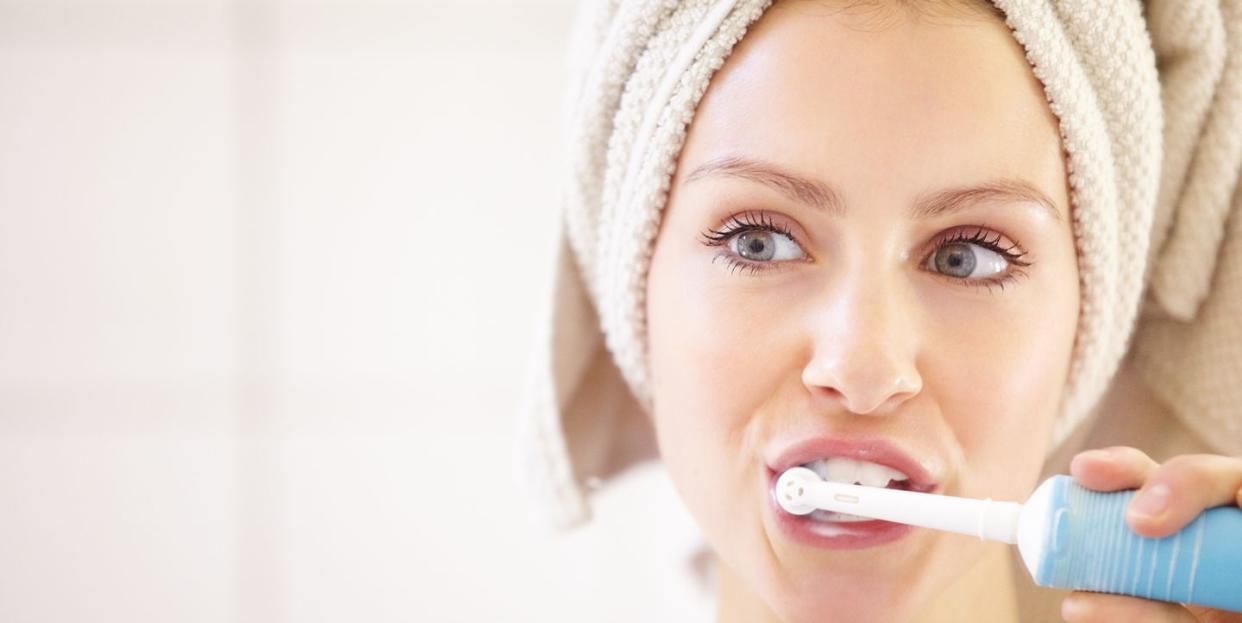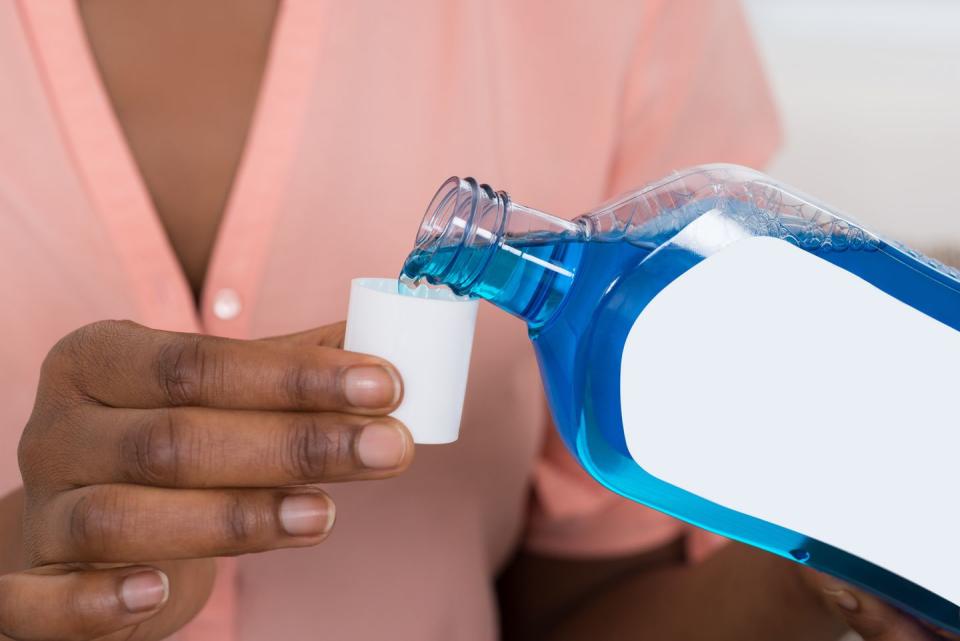How to sanitise an electric toothbrush

Love Good Housekeeping and want more of our Triple-Tested recipes, home tips, fashion inspiration, essential consumer advice and so much more delivered to your inbox? Sign up to our FREE weekly newsletters, sit back and enjoy!
We use our electric toothbrush every morning and night, but when was the last time you cleaned yours?
There are crevices on your electric toothbrush where residual toothpaste and water can gather. Bathrooms are also, often damp and humid and this gives bacteria the perfect chance to grow. And, if yoou flush the toilet with the lid up, there’s potential airborne bacteria to consider.
Thankfully a toothbrush is relatively easy to keep clean. We’ve rounded up our top tips below.
How to sanitise your toothbrush head
Remove the toothbrush head and leave it to soak head down in a short tumbler filled with mouthwash for about 15 minutes. Don’t leave it for longer though or you could damage the bristles. Make sure the bristles are fully submerged throughout. This will effectively sanitise your toothbrush head.
If you don’t have mouthwash to hand, you can alternatively use a solution of two teaspoons of bicarb to one cup of water, or even denture cleaning tablets. Rinse clean once time is up.
Wipe down the plastic of the toothbrush head using a clean, damp microfibre cloth. If there’s residue present on the inside of the brush head, depending on the size of the opening, you could use a cotton bud to clean it or a small pipe cleaner brush.

If the bristles appear worse of wear, it might be time to replace the brush head; you should be doing this every three months or so, or as often as recommended by the manufacturer. If the bristles appear flat and well worn, and it’s not yet been three months, that’s a sign that you’re using too much pressure while brushing. Some electric toothbrushes feature a pressure sensor to help break this habit.
Don’t throw old toothbrush heads away just yet though. These can come in handy for cleaning all over the house; for instance, they’re great for scrubbing grout. Just think of it as a mini electric cleaning brush.
How to clean your toothbrush handle
While your electric toothbrush handle is water-resistant, you shouldn’t submerge it in water to clean it. Instead, rinse it under warm running water and use a damp cloth to wipe away any residual toothpaste. Pay special attention where the head sits as there tends to be calcification here. You can use a few drops of washing up liquid to tackle any stubborn stains prior to rinsing. Dry thoroughly once you’re finished.
If your toothbrush handle sits in a holder, clean that out regularly too with warm soapy water, otherwise it will transfer bacteria over to your toothbrush with the next use.
You can give the charging base a wipe over with a microfibre cloth if needed while you’re here too, but make sure it’s unplugged first.
Tips to keep your toothbrush clean

After every use, remove the head, rinse both parts in hot water and dry. Make sure the water runs through your toothbrush head as well as over the bristles by inverting it under the water.
Tap excess water from the bristles, then wipe dry any plastic parts using a hand towel. Leave the head and handle to air dry separately if possible, but if not, sit the head on the handle loosely but don’t fully click it in place so there’s better air flow.
Make sure the toilet seat is down when it’s flushed and store your toothbrush away from potential airborne pollutants, such as perfume, aftershave, hairspray or deodorant.
Make sure the handle and bristles are fully dry before travelling to prevent bacterial growth. When travelling, store the toothbrush in a travel case to prevent dirt transferring onto the bristles.
Get into the habit of cleaning your electric toothbrush on a regular basis to keep on top of germs and bacterial growth. Disinfecting it once a week is good practice, as well as immediately after you’ve been ill.
You Might Also Like


